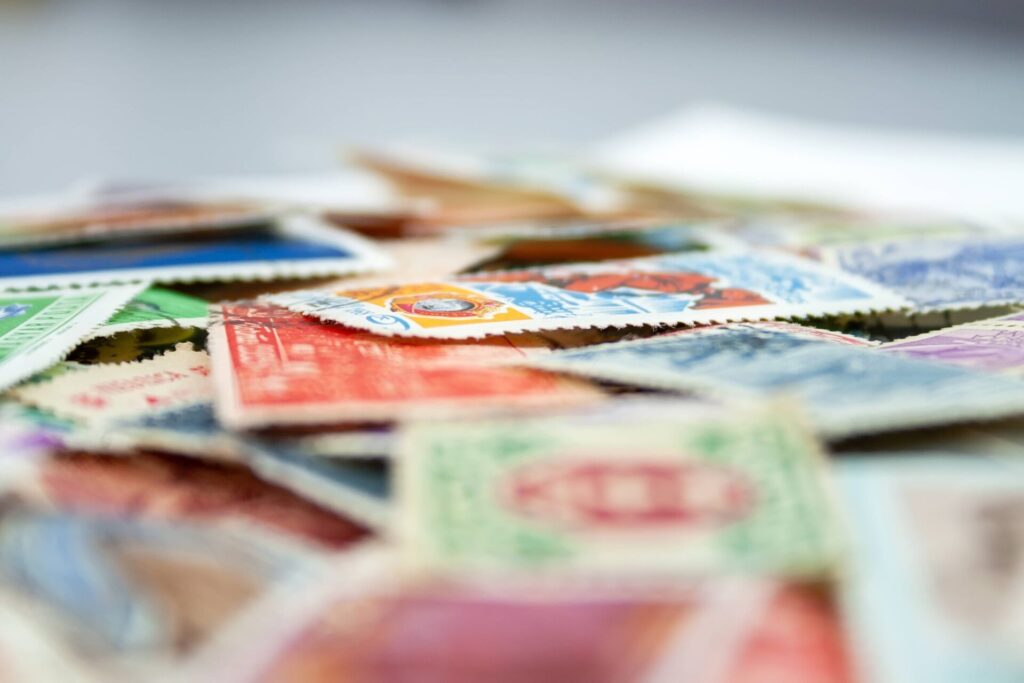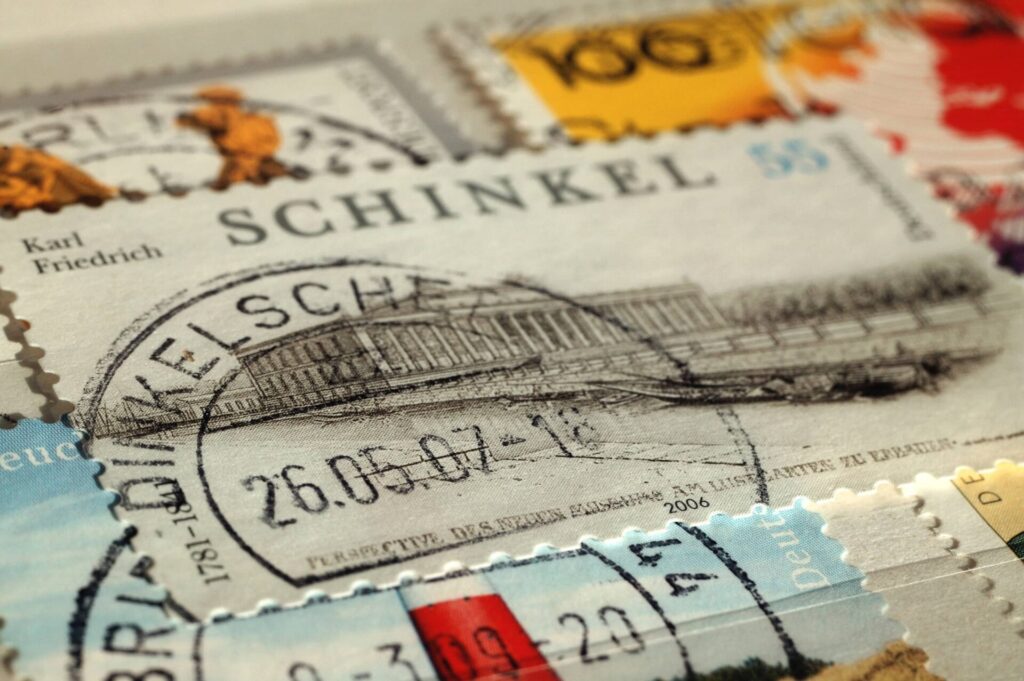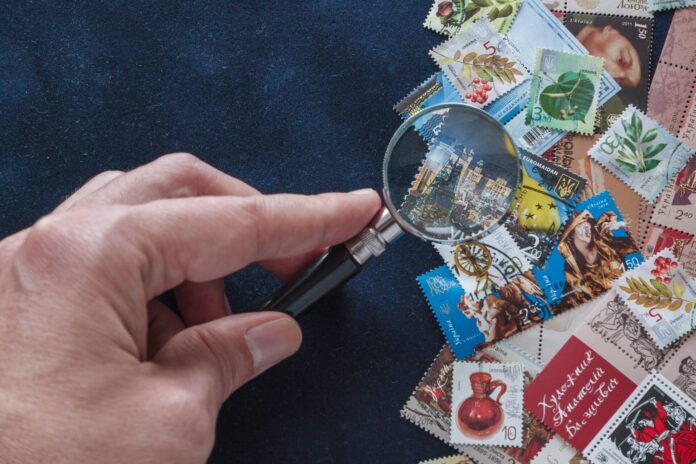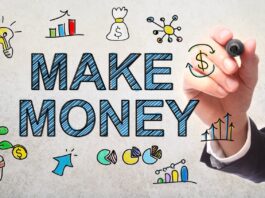Introduction
Stamp collecting is a beloved hobby for millions of people around the world. Stamps are small pieces of paper that bear a design, denomination, and country of origin and are often used to pay for postage. They are collected for their historical, cultural, and artistic value and bought and sold as investments. The value of a stamp can vary greatly depending on factors such as rarity, age, condition, and demand.
In this article, we will explore how to determine the value of your stamp collection and how to profit from it. We will discuss the factors that affect stamp value, the types of stamps, how to evaluate stamp value, examples of valuable stamps, and tips for buying and selling stamps . Whether you are a seasoned collector or just starting, this article will provide valuable insights into stamp values.
Factors Affecting Stamp Value
The value of a stamp is influenced by several factors, including:
The rarity of the Stamp
The rarity of a stamp is one of the primary factors determining its value. The fewer stamps that were printed, the more valuable they became. Stamps that were issued in limited quantities due to printing errors or other reasons are highly sought after by collectors.
Age and Condition of the Stamp
The age and condition of the stamp are also essential factors that influence its value. Older stamps are generally more valuable than newer ones, especially if they are in good condition. Stamps damaged, torn, or missing pieces will have less value than those in pristine condition.
Historical Significance
Collectors highly prize stamps associated with important historical events or famous people. For example, stamps commemorating famous inventions, explorations, or political events can be precious.
Country of Origin
Stamps from certain countries are more valuable than others. Some countries, such as China and Great Britain, have a long and rich stamp production history, making their stamps highly collectible.
Demand from Collectors
Finally, the demand for a particular stamp can significantly influence its value. If collectors highly sought after a stamp, its value can increase significantly. Conversely, if a stamp is not in high demand, its value may remain low.
Read More: Discover Your Next Work-From-Home Job: Best Remote Job Sites to Check Out in 2023
Types of Stamps

Stamps come in various types, each with unique characteristics and value. Here are some of the most common types of stamps:
Definitive Stamps
Definitive stamps are the most common type of stamp, and they are used to pay for standard postage. They typically feature a portrait or image of a well-known person, animal, or landmark from the country of origin. Definitive stamps are issued in large quantities and are usually printed for an extended period.
Commemorative Stamps
Commemorative stamps celebrate special events, anniversaries, or people of historical importance. Commemorative stamps can be highly collectible if they are associated with a significant event or person. They are often printed in limited quantities, and they may only be available for a short time.
Special Edition Stamps
Special edition stamps can be highly collectible and valuable, especially if they are rare or in high demand. Unique edition stamps are issued in limited quantities and are designed for collectors. They often feature unique designs, printing techniques, or commemorative themes.
First-Day Covers
First-day covers are envelopes postmarked for a particular stamp on the first day of the issue. They often feature unique designs or commemorative markings, and they can be highly sought after by collectors. First-day covers can add value to a stamp collection, especially if they are in good condition.
Read More: Earn More Money in 2023: Try These Proven Methods for Real Results
Stamp Value Evaluation
Determining the value of a stamp can be a complex process that requires a deep understanding of the factors that influence stamp value. Here are some methods for evaluating the value of your stamp collection:
Expert Appraisal
One way to determine the value of your stamp collection is to get an expert appraisal. A professional stamp appraiser can provide a detailed assessment of the value of your stamps based on their rarity, age, condition, and other factors. Appraisals can be expensive, but they can also accurately evaluate your collection.
Online Resources for Stamp Valuation
There are many online resources available that can help you determine the value of your stamp collection. Websites like eBay, StampWorld, and Mystic Stamp Company offer tools for valuing stamps based on current market trends and historical sales data. These resources can be a valuable tool for determining the value of your stamp collection.
Factors to Consider When Determining Stamp Value
When evaluating the value of a stamp, it is essential to consider factors such as rarity, age, condition, historical significance, country of origin, and demand from collectors. These factors can significantly influence the value of a stamp, and it is essential to consider them all when evaluating the worth of your collection.
Stamp Grading System
The stamp grading system is used to assess the condition of a stamp. The condition of a stamp is an essential factor that influences its value, and the stamp grading system provides a standardized way of evaluating stamp condition. The grading system ranges from poor to superb, and it considers factors such as centering, gum condition, and overall appearance. Understanding the stamp grading system can help you accurately evaluate the condition and value of your stamp collection.
Read More: 33 Best High-Paying and Flexible Gig Jobs for 2023 – Find Your Perfect Side Hustle Today!
Examples of Valuable Stamps
While most stamps are not particularly valuable, some stamps can be worth a significant amount of money. Here are some examples of precious stamps:
The Inverted Jenny
The Inverted Jenny is a United States postage stamp that was issued in 1918. The stamp features a picture of a Curtiss JN-4 airplane, but the airplane was printed upside down due to a printing error. Only 100 of these stamps were ever printed, and they are highly sought after by collectors. In 2016, a block of four Inverted Jenny stamps sold for $4 million at auction.
The British Guiana One-Cent Magenta
The British Guiana One-Cent Magenta is the world’s rarest stamp. It was issued in British Guiana in 1856, and there is only one known copy of the stamp in existence. In 2014, the stamp sold at auction for $9.5 million, making it the most expensive stamp in the world.
The Treskilling Yellow
The Treskilling Yellow is a Swedish stamp that was issued in 1855. The stamp was supposed to be green, but due to a printing error, it was printed in yellow. Only one copy of the stamp is known to exist, and it is considered to be one of the rarest stamps in the world. In 1996, the stamp sold at auction for $2.3 million.
The Hawaiian Missionaries
The Hawaiian Missionaries are a series of stamps that were issued in Hawaii in 1851. The stamps were used by Christian missionaries to send letters and messages to their families back home. The stamps are highly collectible, and they can be worth thousands of dollars each, depending on their condition and rarity.
Read More: Building a Million-Dollar Business on a Shoestring Budget
Selling and Buying Stamps

If you are interested in buying or selling stamps, there are several options available to you. Here are some of the most popular methods for buying and selling stamps:
Online Marketplaces for Buying and Selling Stamps
There are many online marketplaces available for buying and selling stamps. Websites like eBay, HipStamp, and Delcampe offer a wide selection of stamps from all over the world. These marketplaces allow you to browse through thousands of stamps and buy or sell them at competitive prices.
Auction Houses
Auction houses are another popular option for buying and selling stamps. Auctions can be a great way to get top dollar for your stamps, especially if you have rare or valuable stamps in your collection. Auction houses like Sotheby’s and Christie’s regularly hold stamp auctions, and they can provide you with a professional appraisal of your collection.
Tips for Selling and Buying Stamps
Whether you are buying or selling stamps, there are some tips that can help you get the best deal possible. When buying stamps, it is essential to do your research and make sure that you are getting a fair price. Look for reputable sellers with a history of positive feedback, and avoid buying stamps that are damaged or in poor condition.
When selling stamps, it is essential to get an accurate appraisal of your collection and to be realistic about the value of your stamps. Be prepared to negotiate with buyers and consider selling your stamps in lots to increase their value.
Overall, buying and selling stamps can be a rewarding and profitable hobby. With the proper knowledge and approach, you can build a valuable collection of stamps or sell your collection for a significant profit.
Recap
Stamp collecting is a fascinating and rewarding hobby that can also be a profitable investment. The value of a stamp is determined by a variety of factors, including rarity, age, condition, historical significance, country of origin, and demand from collectors. Understanding these factors is essential for both collectors and sellers.
In this article, we have explored the factors that affect stamp value, the different types of stamps, how to evaluate stamp value, examples of valuable stamps, and tips for buying and selling stamps. By using these insights, you can accurately determine the value of your stamp collection and make a profit from your investment.
Whether you are an experienced collector or just starting out, the world of stamps is full of wonder and excitement. By taking the time to learn about stamp value and following the tips and strategies outlined in this article, you can turn your stamp collection into a valuable asset and a source of pride and enjoyment for years to come.
Frequently Asked Questions
The value of a stamp can be determined by several factors, such as rarity, age, condition, and historical significance. One way to determine the value of your stamp is to get an expert appraisal from a professional stamp appraiser. You can also use online resources to research the stamp’s value and compare it to similar stamps that have been sold in the past.
The authenticity of a stamp can be determined by examining its design, paper, printing method, and other characteristics. It is best to consult with an expert or use online resources to authenticate your stamp before selling or buying it.
To protect your stamp collection, it is important to store it in a cool, dry place away from sunlight and other sources of heat and humidity. Stamps should be stored in acid-free sleeves or mounts to prevent damage from moisture and other environmental factors.
Yes, it is possible to make a profit from your stamp collection by selling it to collectors or at auction. However, the value of your stamps will depend on their rarity, age, condition, and other factors. It is important to do your research and get an accurate appraisal of your collection before selling it.
The condition of a stamp can be determined by examining its centering, gum condition, and overall appearance. The stamp grading system is used to evaluate the condition of a stamp, ranging from poor to superb. It is important to understand the stamp grading system to accurately evaluate the condition of your stamp collection.




